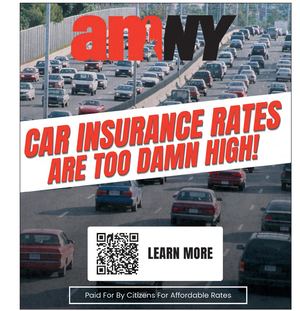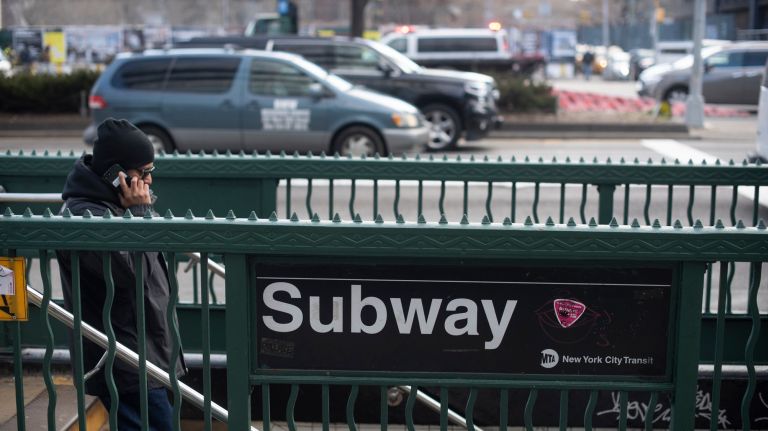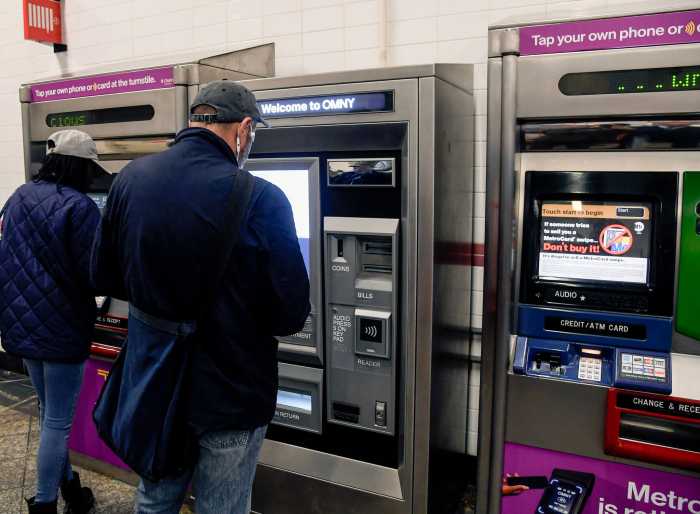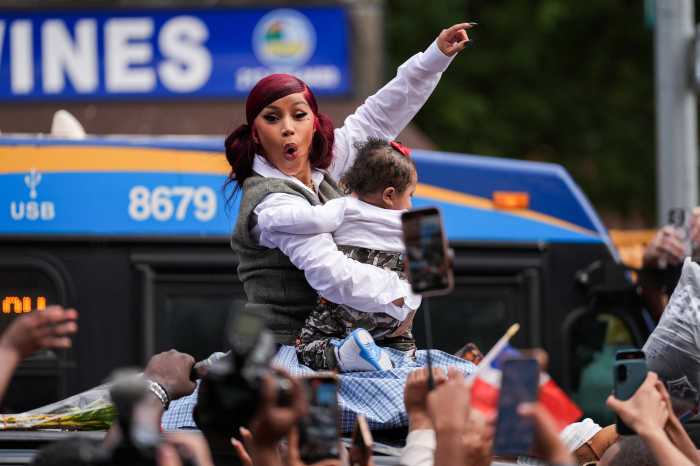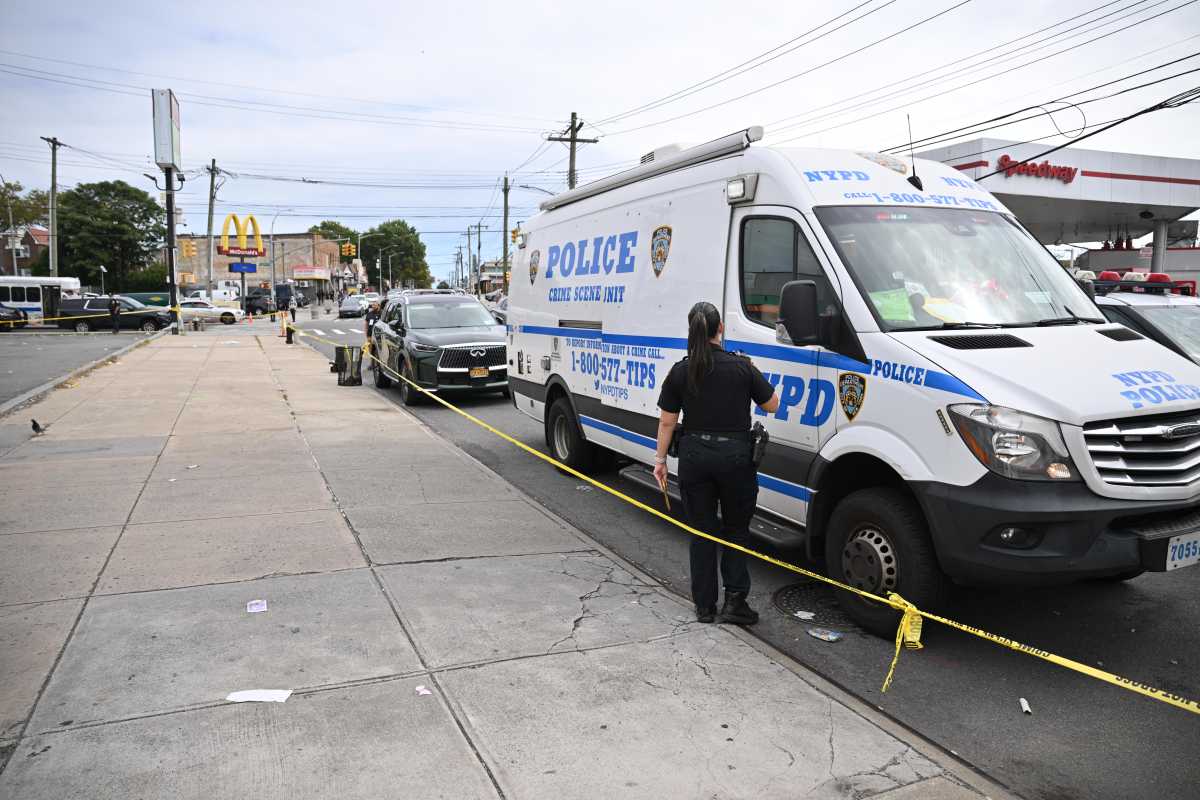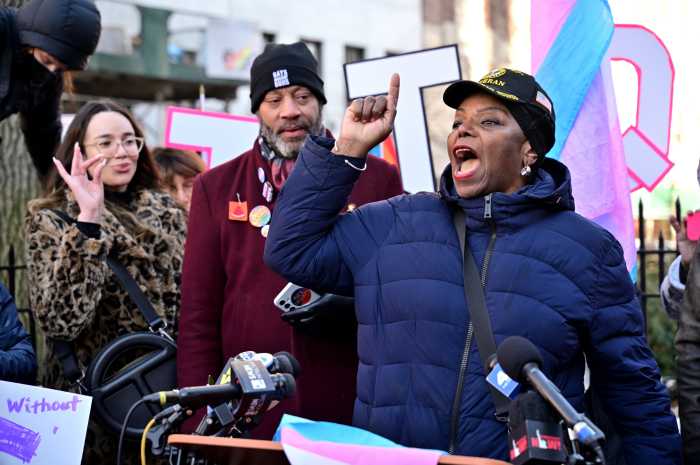
In a rare joint effort, Gov. Andrew Cuomo and Mayor Bill de Blasio on Tuesday announced a 10-point plan to "transform" and fund the struggling Metropolitan Transportation Authority.
Many of the efforts outlined would depend on new legislation from state lawmakers, but Cuomo and de Blasio stressed that the MTA’s financial and operational challenges must be addressed as soon as possible. The authority faces large capital and operating budget gaps — even with more fare hikes expected to come this year. Cuomo said he hopes to secure all elements of the plan through the state budget, which is due April 1.
By reaching an agreement, de Blasio has finally come around to endorsing congestion pricing, which many have long viewed as a valuable traffic-busting and transit-funding policy. The mayor had previously expressed that the measure was unfair for certain drivers.
“We cannot allow the status quo, particularly with our subways, to continue. It’s causing too many problems for hardworking people in this city; it’s disrupting their lives profoundly; it’s an unacceptable reality,” de Blasio said during an unrelated news conference Tuesday, warning that difficult talks around MTA funding could fall apart if not handled before 2020, an election year.
“The urgency of the situation is such that I think we have one great opportunity to get this done in this legislative session,” he added. “I think if we lose this window we’ll regret it for years and years to come.”
The two support a congestion pricing vision Cuomo has loosely crafted for private vehicles entering Manhattan below 61st Street. The plan calls for variable tolls into the area to encourage off-peak trips and deliveries. It also includes toll exemptions for emergency vehicles and calls for further, vague exemptions or discounts for people with disabilities — “hardship” exemptions de Blasio had sought, alongside guarantees that funding would go into a "lockbox," with a portion going to improving transit in the city’s transportation deserts.
They also endorsed pulling new MTA funding from portions of revenue generated from marijuana legalization in addition to the new internet sales tax on purchases in New York City. Cuomo had previously stated that congestion pricing was the best and only way to fund the MTA.
The revenue raised from congestion pricing, internet sales tax and marijuana legalization could bring $22 billion in bonds for MTA transit investments, according to the governor’s office. Much of that money could help support the authority’s next five-year capital plan for 2020 to 2024, which has been estimated to cost around $60 billion. Tolls would be set for congestion pricing by the end of 2020.
The plan’s proposal for reforming the authority hinges on the consolidation of many aspects of the MTA’s six separate entities that handle different services, including local subway and buses; the Long Island Rail Road and Metro-North and capital construction.
“The antiquated structure will be fundamentally changed to centralize common functions among the six existing entities,” the proposal said.
By June, the MTA authority will “streamline” each agency’s construction management, legal, engineering, procurement, human resources and advertising efforts into a central operation, according to the plan.
Recently, Cuomo has been especially critical of the MTA — an authority he effectively controls. He said during a radio appearance on WNYC Tuesday morning that the authority needed a better management structure to rein in costs.
“It’s a 1960s-style holding company with a 1960s-style mentality,” Cuomo said. “We have to consolidate the functions of the MTA, bring in a different culture, make the board functional and operational so that we know that we’re getting efficiency from the riders’ fare.”
While some felt the plan muddies accountability and governance at the MTA, other advocates cheered the announcement as a key step closer to achieving the enactment of congestion pricing. John Raskin, the executive director of the nonprofit Riders Alliance, said the onus was now on the State Senate and Assembly to enact the measures outlined in the plan.
“I think that the governor and mayor are helping form a consensus around a congestion pricing system that will make real progress toward fixing the subway,” Raskin said, "but is also fair and sustainable and responsive to people’s needs.”
MTA Acting Chairman Fernando Ferrer threw support behind the proposal. He warned that if the new revenue from congestion pricing doesn’t come in, the authority would be forced to implement another, massive fare and toll hike to cover capital needs like maintenance and new projects. The MTA board is scheduled to vote on its next round of fare hikes Wednesday.
“This proposal is a holistic cure for much of what ails the MTA, and I hope to see it enacted swiftly for the benefit of our 8.5 million daily customers,” Ferrer said in a statement.
The plan had several significant early detractors. City Council Speaker Corey Johnson, who prefers city control of the MTA’s subway and local bus system, said in a statement that he "strongly disagree[s] with the idea that giving the state more control of city generated revenue and our transit infrastructure is going to magically solve our problems."
The good-government watchdog Reinvent Albany panned the proposal even though the group supports congestion pricing. Reinvent Albany worried that the consolidation could strip power from NYC Transit President Andy Byford and the implementation of his 10-year plan to modernize transit service with new subway signals, bus networks and accessibility goals.
“This reorganization plan goes far beyond just consolidating things like human resources and whatnot, and really talks about significant changes to the way construction projects are managed,” said Rachael Fauss, a senior research analyst at Reinvent Albany. “Is this just a further sidelining of the transit professionals that have been hired, like Andy Byford?”
Fauss also focused on another point that detailed a new Regional Transit Committee. The expert panel would review the MTA’s capital plan as well as future fare and toll increases — duties the MTA board already carries out.
“It further diffuses accountability rather than clarify it, which I think could be potentially damaging to the governance structure of the MTA,” she added.
Lisa Daglian, the executive director of the Permanent Citizens Advisory Committee to the MTA, shared Fauss’ concerns about the new committee. She also worried about a consolidation that could be carried out in haste.
“June seems like an arbitrary deadline for putting together such a massive and important restructuring,” said Daglian, who was in Albany Tuesday discussing the transit needs of the region.
While the organizational reform can be executed without new legislation, according to the governor’s office, it’s not yet clear how or if lawmakers will act on some of the other points.
“Legislators have a good understanding of the funding needs, but not the funding mechanisms to get the MTA where it needs to be,” she said. “Continually changing what’s being asked of them is presenting different challenges.”
